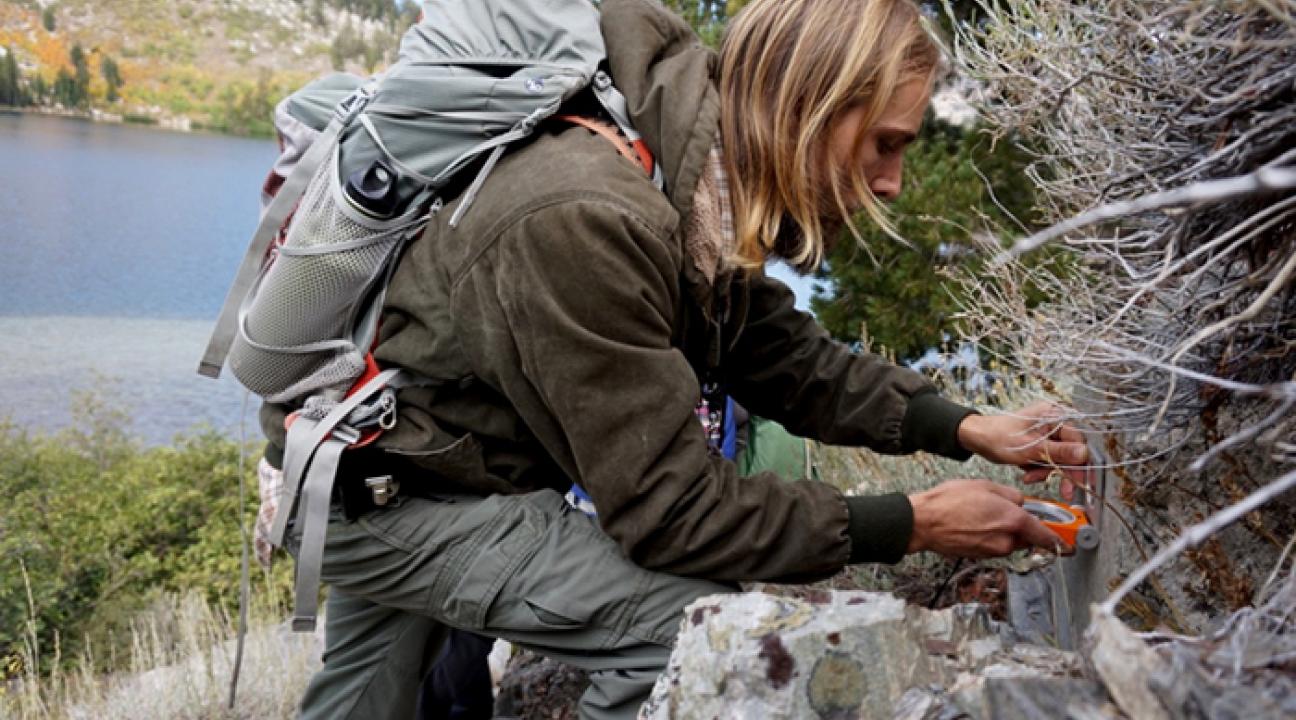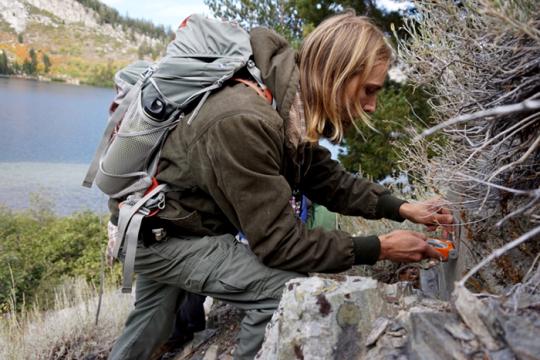Unfold Earth's Natural History
Geology Students Study On-Site in the Sierras
Geologists study the Earth around us, and there is no better way to learn than by actually looking at rocks in the field. It is for this reason Sonoma State University geology students embark regularly on excursions to remote areas, and a group of 17 students just returned from the Southern Sierras where they studied the 500 million-year-old tectonic forces that have shaped California.
"These trips are the foundation of the department," says geology professor Matty Mookerjee. "They introduce students to the remarkable geology that surrounds us all."
The trip started in Yosemite National Park, explored the Mammoth Lakes region then traveled through Long Valley Caldera before ending with a detailed study of the world-famous Poleta Folds in the natural laboratory of Deep Springs Valley.
Working outside on a beautiful day in Yosemite, students identified rock types, practiced primary data collection using their Freiberger compasses and Trimble GPS units, and learned to identify signs of deformation like fractures, folds and faults. In Mammoth Lakes, students measured the orientation of foliations and lineations along the shores of Lake George within the Rosy Finch Shear Zone.
But the biggest project of the trip was a two-day mapping exercise in Poleta Folds, known as a rite of passage in the field of geology. Students from universities across the nation descend upon this small pocket in the desert to study the 500 million-year-old sediments and "unfold" the history the rocks record.
In the evenings, weary students came back to the campground in Westgard Pass to eat and relax around a roaring fire. They exchanged stories about their days in the field and unwound by playing board games on the picnic tables before heading to their tents to sleep under a full moon. Graduates of SSU all share this common experience, and often tell stories of bonding with colleagues while reliving their days spent mapping under the hot desert sun.
"Every trip reminds us that it's about more than just geology," says SSU geology technician Phil Mooney, who participates in many of the department's excursions. "These shared experiences often help to form relationships with friends and colleagues that last a lifetime."



